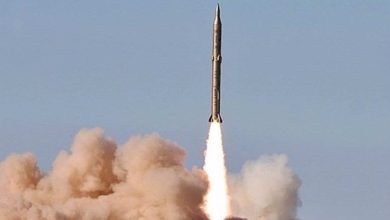Security Forces in Damascus Mobilize at Tishreen Dam Under Agreement With Kurds
As reported by SANA, the agreement includes the establishment of a joint military force tasked with protecting the dam and stipulates the withdrawal of factions supported by Turkey.

Security forces from Syria’s transitional government were deployed on Saturday around the significant Tishreen Dam in northern Syria, as part of an agreement with the autonomous Kurdish administration, according to reports from state media.
According to the agreement, the Kurdish-led forces of the US-supported Syrian Democratic Forces (SDF) will retreat from the dam, a site they had seized from the Islamic State (IS) group in late 2015.
The Tishreen Dam, situated near Manbij in Syria’s Aleppo province, is among several key dams along the Euphrates River and its tributaries that are essential for providing the country with much-needed irrigation and hydro-electric power.
On Thursday, a Kurdish source reported that the Kurdish authorities in northeast Syria have achieved an accord with the central government concerning the management of the dam. An additional Kurdish source informed AFP on Saturday that the agreement, overseen by the US-led anti-IS coalition, specifies that the dam will continue to be administered by Kurdish civilian authorities.
Syria’s state news agency SANA has reported that the Syrian Arab Army and security forces have entered the Tishreen Dam area. The move is part of an agreement reached with the Syrian Democratic Forces (SDF) to establish security in the region.
The SANA agency reports that the accord includes the establishment of a combined military unit tasked with safeguarding the dam. Additionally, it mandates the retreat of Turkiye-supported groups “aiming to undermine this agreement.”
The development is a component of a wider agreement established in mid-March between interim Syrian President Ahmed al-Sharaa and SDF commander Mazloum Abdi, focused on incorporating the institutions of the Kurdish autonomous administration into the national government.
The Tishreen Dam emerged as a significant strategic site during the Syrian conflict that began in 2011. Initially captured by rebel factions, the dam was subsequently taken over by the Islamic State before ultimately being reclaimed by the Syrian Democratic Forces.
Tishreen Dam in northern Syria became the focal point of a significant visit involving a delegation from the US-led international coalition. The delegation was joined by officials from the Syrian government and the Kurdish-led Syrian Democratic Forces (SDF), amidst heightened helicopter operations by the international coalition in the surrounding skies.
Local sources have informed Al Mayadeen that the visit is intended to finalize an agreement concerning the transfer of dam management to the newly established Syrian administration. The discussions also addressed the withdrawal of all armed factions from the area surrounding the dam and the formation of a unified security force to ensure its safeguarding.
The visit comes after close to three months of heightened tensions and violent confrontations involving the US-supported Syrian Democratic Forces (SDF) and the Turkish-supported National Army factions. This period of relative calm could potentially open the door for more extensive political initiatives.
The Tishreen Dam holds a significant strategic location, serving as a crucial link between the three major Syrian governorates of Aleppo, al-Raqqa, and al-Hasakah. This strategic hub plays a vital role in overseeing essential supply routes and military corridors throughout northern Syria.
The dam holds substantial strategic importance, transcending its geographical and hydrological significance. It acts as a powerful natural fortress, capable of serving as a sophisticated defensive line against potential attacks. This elevates its military value, rendering it a highly coveted asset among various stakeholders.







